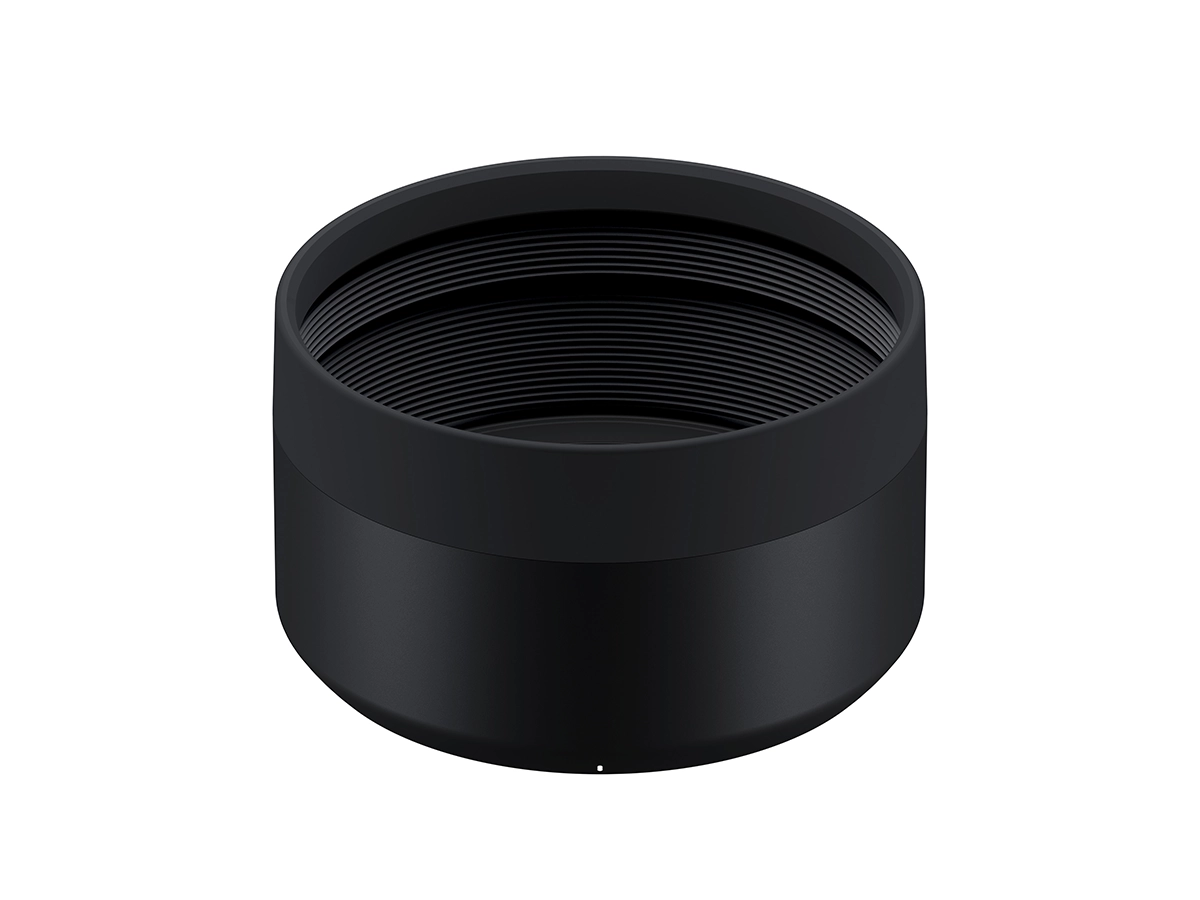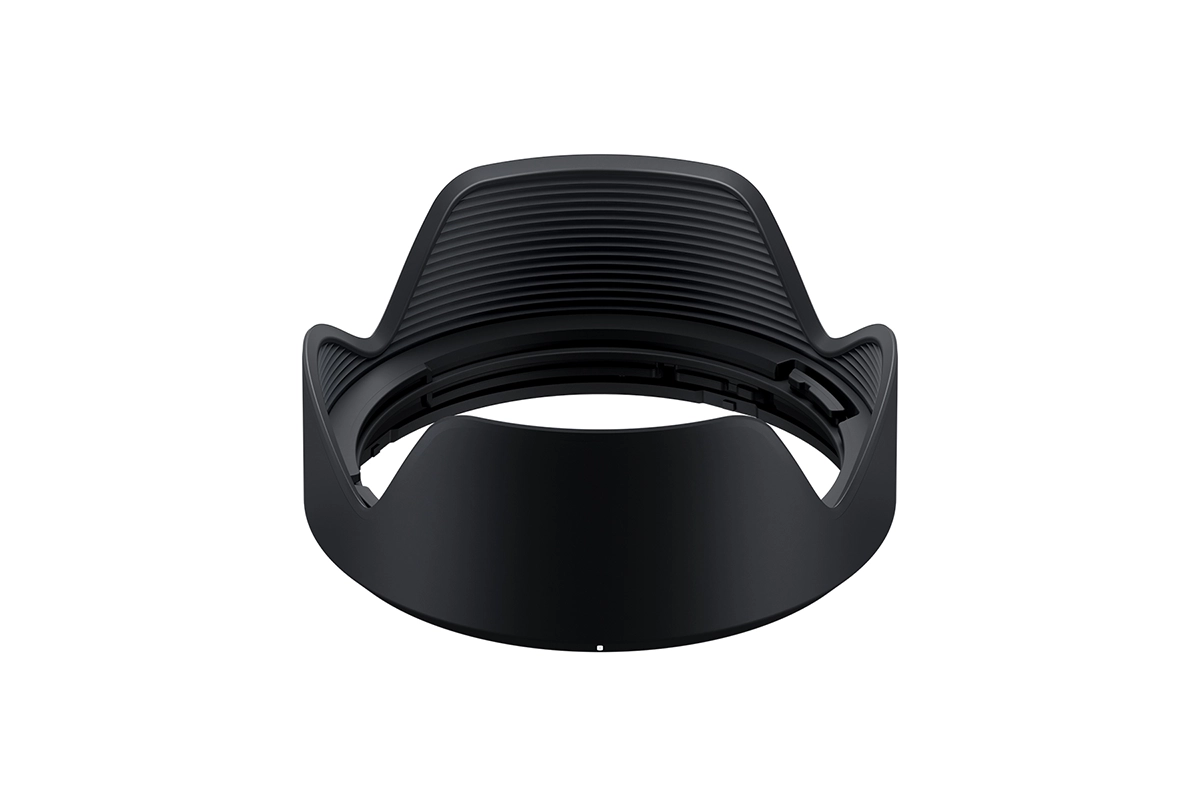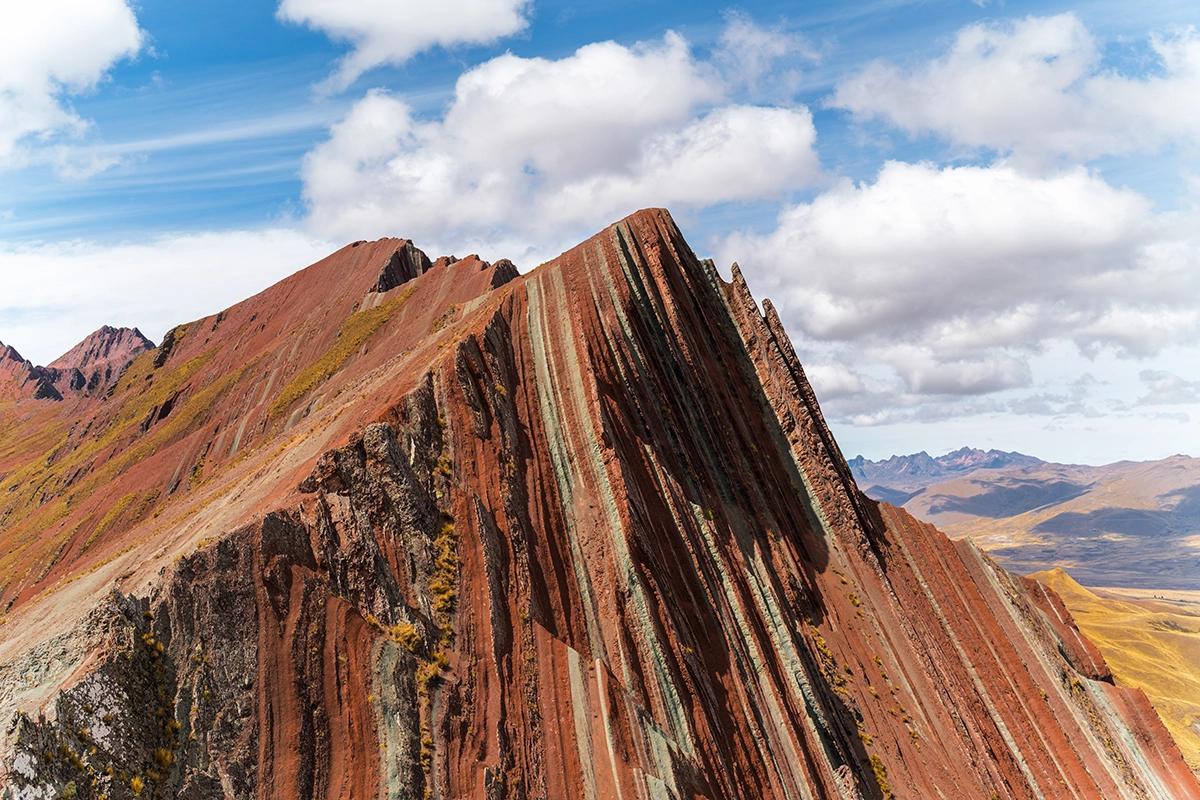You might have observed patches of light in your images, likely stemming from unwanted flare and ghosting. Failure to use your camera lens hood could have contributed to this.
Tamron lenses produce excellent images with high resolution, contrast, and sharpness. The designers at Tamron consider the hood to be an essential component of the lens design. Therefore, they strongly recommend using the camera lens hood whenever shooting outdoors.
Experts recommend using it even at night and indoors to prevent stray light from entering the lens from any source. All Tamron lenses include a lens hood designed to fit the specific lens.
What You Will Learn in This Post:
- Why Use a Lens Hood? How it prevents flare, ghosting, and enhances image quality.
- Types of Lens Hoods: The best hood shape for your specific lens.
- Image & Lens Protection: How a hood improves contrast and shields your lens from damage.
- Using a Hood with Filters: Tips for compatibility and adjustments.
- When & When Not to Use a Hood: Situations where removing it can create artistic effects.
A camera lens hood serves multiple significant purposes for photographers. Employing a photography lens hood will enhance the quality of your images. A hood may seem like a simple accessory, but it can be confusing when and why to use it.

What is a photography lens hood?
The photography lens hood is made from the same material as your lens body. It attaches to the front of your lens either by snapping or screwing on. Its primary function is to block unwanted light from entering the lens.
The lens cap will fit on your lens when you are using a hood. You can also place the lens cap on the lens when the hood is in the storage position. There are several types of lens hoods and the one you use is determined by the type of lens you are using.
Telephoto lenses require that you use one that is deep. The hood is cylindrical with no cut outs to accommodate the focal lengths your telephoto zoom lenses are designed to cover. The same type of hood is used for prime lenses that have a focal length of 50mm or more.

Standard and Wideangle zoom lenses use tulip lens hoods or petal lens hoods. The sides of the hood are cut out to five the appearance of a flower. When you are zoomed out to a wide angle setting, the hood will not create any vignetting on the sides. If the hood is not cut out, you will get dark edges on your image.

What does the camera lens hood do?
1. Prevents flare and ghosting

The hood prevents internal reflections and aids in diminishing various types of lens flare, including veiling flare and ghosting. Lens flare occurs when unwanted light enters the lens and reflects off the internal elements, creating artifacts that reduce overall image clarity. Flare and ghosting can significantly deteriorate image quality by reducing contrast, washing out colors, and introducing distracting visual effects. These issues are especially prominent when shooting in bright sunlight, near artificial lights, or in high-contrast environments, where stray light can enter the lens from different angles.
Ghosting typically appears as bright, semi-transparent circles, rings, or streaks that seem to emanate from the light source. This happens when strong light reflects multiple times within the lens, creating overlapping reflections that become visible in the image. Unlike bokeh, ghosting is an unwanted artifact that can clutter an image and draw attention away from the subject.
Veiling flare, on the other hand, occurs when diffused light scatters across the image, creating a hazy, low-contrast effect that makes the scene appear washed out. This is often caused by a light source positioned just outside the frame but still affecting the lens’s front element. Instead of distinct flare spots, veiling flare results in an overall loss of detail and a dull, muted look.
By using a lens hood, photographers can minimize these unwanted effects by blocking stray light from reaching the lens at problematic angles. This simple yet effective tool helps preserve the sharpness, contrast, and color vibrancy of images, ensuring that subjects remain well-defined even in challenging lighting conditions.
2. Increases color and contrast

High Contrast Scenes
Stray light in high-contrast scenes can scatter within the lens, causing a washed-out appearance that reduces contrast and mutes colors. When unwanted light bounces off the internal elements of the lens, it creates a hazy effect that diminishes the intensity of shadows and highlights, making images appear flat or dull. A lens hood acts as a barrier, blocking this extraneous light from entering the lens at unfavorable angles, thus preserving the integrity of the image.
This improvement is particularly noticeable in high-contrast scenes, such as when photographing a subject against a bright sky, strong artificial lighting, or reflective surfaces like water or glass. Without a hood, excessive light can reduce the depth and definition of the image, causing the subject to blend into the background. However, when a lens hood is used, colors appear more saturated, blacks look deeper, and the overall scene retains its natural vibrancy.
Backlit Scenes
Backlighting situations—where the light source is directly behind the subject—are another scenario where a lens hood proves invaluable. Without proper lens protection, intense backlighting can introduce lens flare, reducing the crispness of the image and making details harder to distinguish. A hood minimizes these effects, allowing for richer tones, clearer distinctions between highlights and shadows, and a more balanced exposure.
By maximizing contrast and color accuracy, a lens hood ensures that images retain their full visual impact. Whether capturing portraits, landscapes, or urban environments, the added depth and clarity contribute to more professional, visually compelling photographs.
3. Provides protection for your lens

A lens hood is not just a tool for enhancing image quality—it also serves as an important protective barrier for your camera lens. The front element of a lens is highly susceptible to damage from accidental bumps, scratches, and impacts, especially when shooting in crowded areas, rugged environments, or fast-paced situations where you might not always be able to keep your lens completely shielded. A lens hood extends beyond the front glass, absorbing shocks and reducing the likelihood of direct contact between the lens and external objects.
One of the most significant protective benefits of a lens hood is impact resistance. If you accidentally bump your camera against a wall, railing, or another object, the hood takes the brunt of the impact instead of your delicate lens glass. This is particularly useful for photographers working in dynamic settings, such as street photography, sports, or nature photography, where quick movements increase the risk of unintended contact with obstacles.
In cases where a camera is dropped, a lens hood can also provide crucial protection. If the front of your lens hits the ground, the hood can prevent direct impact on the lens element itself, reducing the chance of shattering, denting, or scratching both the glass and any attached filter. Given the high cost of lens repairs and replacements, using a lens hood as a preventive measure is a small but effective way to avoid expensive damage.
Tamron’s Enhanced Protection Features
Tamron understands the need for added protection, especially for outdoor photographers. Some Tamron ultra-telephoto zoom lenses come equipped with a flexible, shock-absorbing front rim, which helps prevent cracks and breakage if the lens is set down on a hard or uneven surface. This added flexibility allows photographers to rest the lens on its hood—on surfaces like rocks, pavement, or uneven ground—without fear of damaging the hood itself.
Weather Protection: Shielding Your Lens from the Elements
While a lens hood is not a substitute for a waterproof housing, it does offer some protection against the elements. When shooting in light rain, snowfall, or dusty conditions, the hood helps prevent moisture, dust, and debris from settling directly onto the front element of the lens. This is especially useful when working in outdoor environments where sudden changes in weather can expose your gear to harsh conditions.
Protection from Rain and Dust
For example, in drizzly or misty conditions, a hood provides an overhang that helps keep raindrops from landing on your lens, reducing the need for frequent wiping and minimizing the risk of water streaks appearing in your shots. Similarly, in windy or sandy locations, such as beaches or deserts, the hood acts as a shield, helping to block airborne particles from sticking to the lens surface and reducing the chances of scratches caused by dust.
Easy Maintenance with Fluorine Coating
However, if moisture, dirt, or smudges do accumulate on your lens, Tamron lenses feature a fluorine coating on the front element, making cleaning quick and effortless. This coating repels water, oil, and dirt, ensuring that any smudges or marks can be wiped away with minimal effort, keeping your lens in optimal condition.
A lens hood is more than just an accessory—it’s an essential layer of protection for both the optical and physical integrity of your lens. Whether guarding against accidental bumps, reducing the risk of damage from drops, or shielding your lens from rain, dust, and scratches, a hood serves as a cost-effective safeguard for your valuable equipment. By incorporating a lens hood into your photography setup, you not only enhance image quality but also extend the longevity of your lens, ensuring it stays in top shape for years to come.
Can I remove the lens hood to intentionally create flare?

There are situations where removing the lens hood can be a creative choice rather than a drawback. Lens flare, often considered an unwanted artifact, can also be used artistically to add mood, warmth, or a dreamlike quality to an image. By shooting directly into a strong light source without the hood, you can introduce various types of flare, each contributing a unique visual effect to your photography.
Intentional lens flare is commonly used in both portrait and landscape photography to enhance storytelling. In portraits, flare can create a soft, ethereal glow, adding warmth and a natural backlit effect. In landscapes, it can emphasize the intensity of sunlight, conveying a sense of atmosphere and depth.

One specific type of intentional flare is veiling flare, which occurs when diffused light scatters across the image, reducing contrast and creating a hazy, glowing effect. This technique can be used to evoke a sense of nostalgia or warmth, but excessive veiling can make an image appear washed out and unusable.
If you want to experiment with lens flare, try adjusting your angle relative to the light source, as different positions will produce varying effects. While removing the lens hood can help introduce flare, be mindful of maintaining balance so that it enhances rather than overwhelms your composition.
Can I use filters when I am using my lens hood?

You can achieve a starburst effect by shooting with a small aperture, such as f/11 or f/16. The starburst effect transforms the sun into a small, star-like beam of light. The aperture controls the amount of light entering the camera. With smaller apertures allowing less light through, the sun’s appearance shifts to a radiant starburst. For a more pronounced starburst effect, position the sun or light source at the periphery of your subject, like a tree, mountain, or person.
You may need to remove the hood when using your pop-up flash. The lens hood can obstruct the light from the pop-up flash, resulting in a shadow at the bottom of your image. Using a flash attached to your camera’s hot shoe resolves this, as it’s elevated position on the camera prevents any interference with the lens hood.
You can mount the hood onto your filter. When using a circular polarizer filter, you will need to reach into your hood to adjust the effect. Tamron’s new 90mm lens hood has a “filter effect window” that you can open and close to adjust your filter without the need to reach inside the hood.
Can I use one camera lens hood on all my lenses?
While it may seem convenient to use a single lens hood for multiple lenses, lens hoods are not universally interchangeable. Just like filters, hoods attach to the front of your lens, and they must match the diameter and design of the specific lens they are intended for.
Each lens hood is designed to complement the focal length and optical characteristics of a particular lens. For example:
- Telephoto lenses require deep, cylindrical hoods to prevent stray light from affecting the long focal length.
- Wide-angle lenses use tulip (petal-shaped) hoods, which have cutouts to prevent vignetting when shooting at wide focal lengths.
- Standard lenses (40mm or more) typically use round or slightly conical hoods for balanced light control.
If you have two lenses of the same type (such as two wide-angle lenses) and they share the same filter thread size, you may be able to use the same hood on both. However, if the filter thread size differs or the focal lengths vary significantly, a mismatched hood could cause vignetting or fail to provide adequate protection against flare.
What do I do with my hood when I am not using it?
Most modern lens hoods, including those designed by Tamron, are built for convenient storage. When not in use, you can simply reverse the hood and attach it to the lens in an inverted position. This keeps the hood securely stored without taking up extra space in your camera bag.
Before placing your camera and lens into your bag, make sure the hood is reversed and locked into place. This ensures:
- Compact storage, reducing the need for additional space.
- Easy accessibility, so you can quickly reattach the hood when needed.
- Added protection, as even in its reversed position, the hood provides some level of safeguarding against minor bumps.
What do I do if I do not have a camera lens hood?
If you don’t have a lens hood, you can still take steps to reduce glare, flare, and ghosting in your photos:
- Use your hand or an object to shade the lens – Holding your hand just outside the frame to block direct light can mimic the effect of a hood.
- Change your shooting angle – Adjusting your position relative to the light source can help minimize unwanted reflections.
- Use natural shading – Position yourself near trees, buildings, or other structures to block excessive light from hitting the lens.
While these workarounds can help, using a properly fitted lens hood is the best and most reliable solution for preventing unwanted light and protecting your lens. If you frequently shoot in bright conditions or want to ensure maximum image quality, investing in the right hood for your lens is highly recommended.
Final Thoughts
The camera lens hood is an important tool to use when you are taking photos. Using a lens hood can help you achieve better image quality and protect your valuable equipment, making it a worthwhile accessory for any photographer. If you do not have a tool, consider purchasing the right hood for your lens or lenses before heading out on your next shoot.
Learn about Tamron Lenses at an authorized Tamron dealer in your area or visit the TAMRON Store today.
More Photo Tips | Watch Videos | Learn More About Tamron Lenses | Photo Gallery
